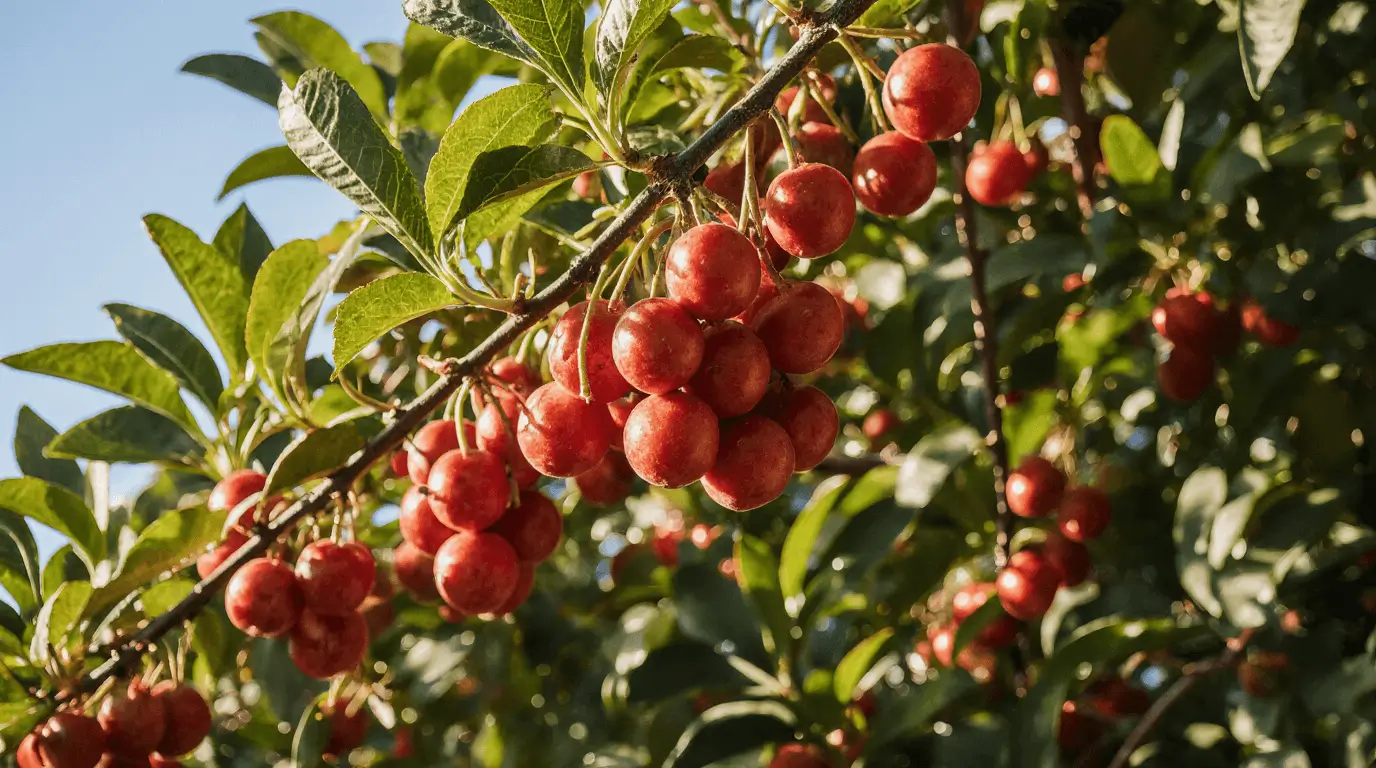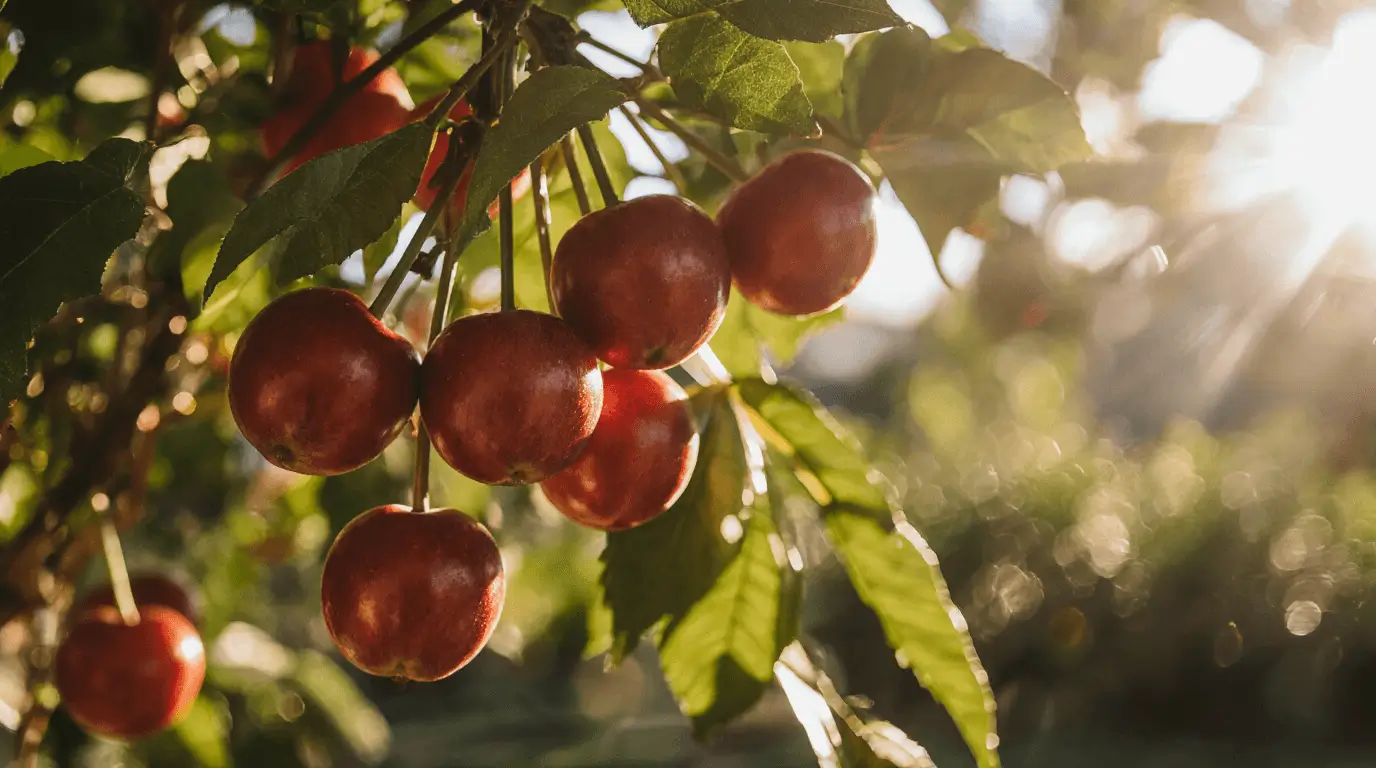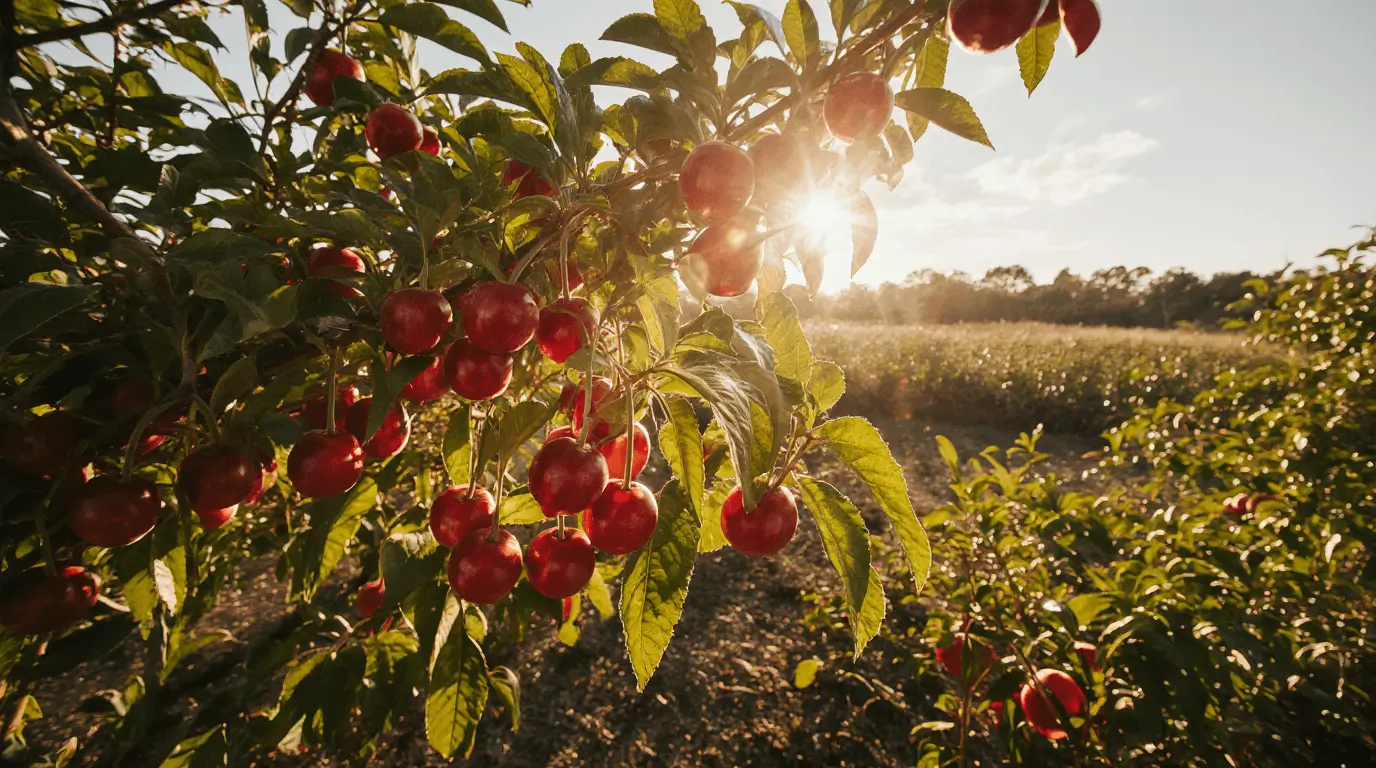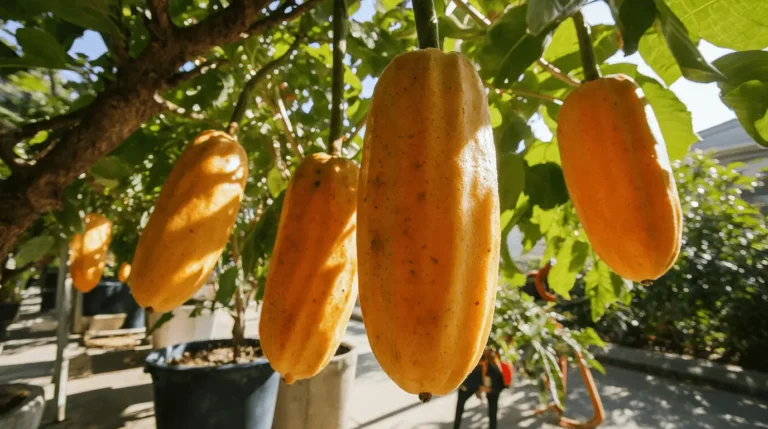When I first planted my Barbados cherry tree in Florida — also known as the Acerola cherry — in my backyard garden, I didn’t realize what a true gem this plant would become. Its bright red edible fruits quickly turned into a tasty snack straight from the yard, packed with vitamin C and bursting with flavor. Living in Florida’s hot climates, I’ve seen how this beautiful cherry tree thrives as both a decoration and a source of daily joy. Each morning, the viewing of fresh cherries and blossom brings a sense of hope, renewal, and the gentle essence of waiting for nature’s rhythm to reward your patience.
Over time, I developed a deep bond with this tropical treasure, learning that understanding its growth, care, and regular maintenance is essential for successful results. A vibrant fruit tree like this adds charm, beauty, and pride to any landscape, making your home feel alive with color and freshness. Watching the delicious fruit growing reminds me that gardening is more than just work — it’s a celebration of life, nurtured by patience, sunlight, and passion.
Read Also: Tropical Fruit Trees: Grow Exotic Paradise at Home
Some Commonly Asked Questions Regarding Growing Barbados Cherry Trees
Expert Tips for Successful Growth
- What is a Barbados cherry?
The Barbados cherry, also called the Acerola cherry or Malpighia emarginata, is a tropical shrub or small tree that’s often cultivated for its sour, vitamin C-rich fruits. I’ve grown this beautiful variety myself in warmer climates and Florida gardens, and it truly adds an exotic touch to any orchard or home compound. - How do I start growing from seeds?
The seeds are hard and hidden inside the fruit pulp. To cultivate them successfully, be patient and invest time in proper soil preparation. Let them germinate naturally in warm and humid climates for the best results. - What climate is suitable for cultivation?
This subtropical species thrives in high temperatures and doesn’t require chilling hours. In Florida, where the climate is mild yet humid, Barbados cherries grow beautifully all year long. - When will my tree start bearing fruit?
A mature tree generally starts producing cherries in its third year. With good growing conditions, including rich soil, steady sunlight, and a proper watering routine, your tree will soon have plenty of fruits borne each season. Fast Producing Fruit Trees, Shrubs & Vines - Should I prune my Barbados cherry tree?
Yes, pruning is essential for proper management and growth. I usually prune mine after the fruiting season to maintain its shape, remove dead or damaged branches, and encourage healthy regrowth. - How much water does it need?
Consistent water is key, but avoid overwatering. Use well-drained soil to prevent root rot, and increase watering during the dry season. Be careful not to drown the roots – balance is everything. Read Also: Benefits of Choosing Eureka or Meyer Lemon Trees - How tall does it grow?
A mature Barbados cherry tree can reach a height of 10 to 15 feet. However, regular care and trimming can keep it compact and perfect for gardens or home compounds. - What pests should I watch for?
Keep an eye out for aphids, scale insect, and other infestations. Regular tracking and applying organic insecticides will protect the plant and prevent it from getting infected. Read Also: Tree Insect Management - What fertilizer works best?
During the growth period in spring and summer, use a balanced, slow-release fertilizer with an N-P-K ratio like 10-10-10 or 12-12-12. For even better results, enrich the soil with compost, micronutrient-rich seaweed, or fish emulsion. Ensure the plant gets six to eight hours of direct sunlight daily, even if it tolerates some partial shade, for a stronger yield of beautiful cherries.
Read Also: Gardening & Plant Care Guide for Thriving Plants
Conclusion
Growing a Barbados cherry tree is more than just cultivating fruit — it’s about nurturing a living connection to nature.

This tropical gem rewards your patience and care with vibrant red cherries that brighten both your garden and your day. With the right balance of sunlight, water, and pruning, your tree will flourish and bring joy for years to come. Whether you’re a beginner gardener or a tropical plant enthusiast, tending to this tree teaches the beauty of steady growth and the satisfaction of harvesting something truly special.
Read Also: 7 Proven Tips for Perfect Tamarind Plant Care
Disclaimer:

The information shared here is meant for educational purposes. Always consult with local experts or horticultural professionals for specific growing advice suited to your region.




